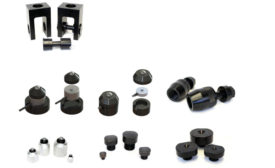Home » calibration
Articles Tagged with ''calibration''
Facing Reality, Part II
When measurement disputes arise, the finger pointing begins.
November 1, 2019
Facing Reality
Disputes over measurements continue to plague the industry.
October 1, 2019
Dealing With Measurement Uncertainty
The application of uncertainty often brings up questions.
September 15, 2019
Introducing Standard B1.25
The new standard B1.25 will help thread gage calibration.
August 15, 2019
Web Exclusive
Recommended Compression and Tension Adapters for Force Calibration
July 3, 2019
Other Dimensions
When is a gage worn out?
Ideally, the record would indicate how much wear is acceptable.
April 1, 2019
Stay in the know with Quality’s comprehensive coverage of
the manufacturing and metrology industries.
eNewsletter | Website | eMagazine
JOIN TODAY!Copyright ©2025. All Rights Reserved BNP Media.
Design, CMS, Hosting & Web Development :: ePublishing




